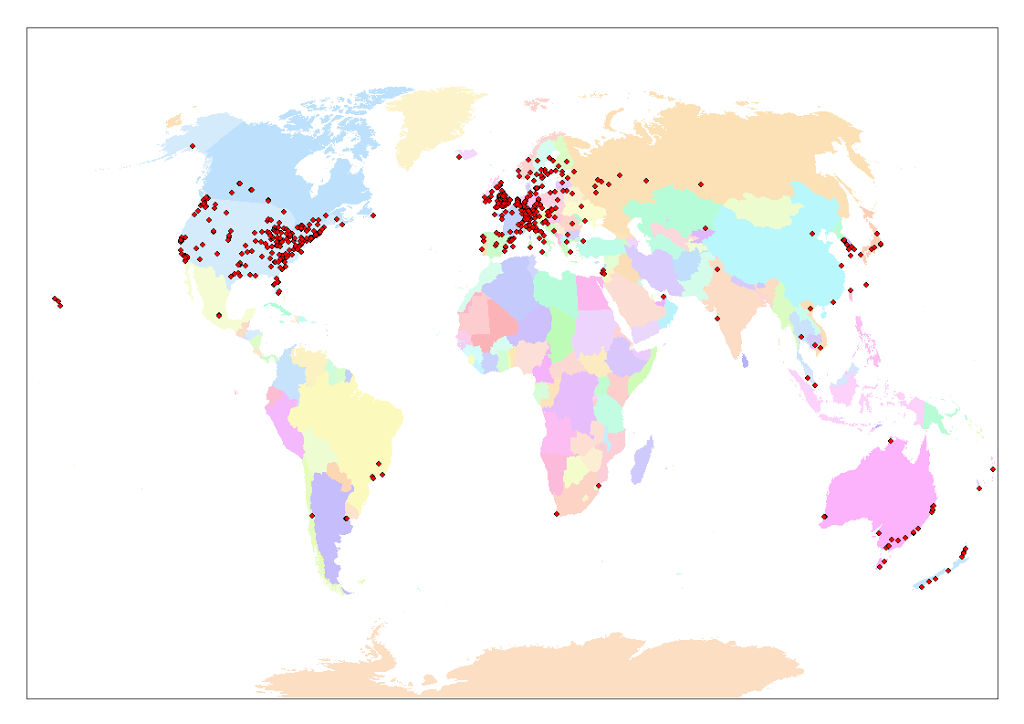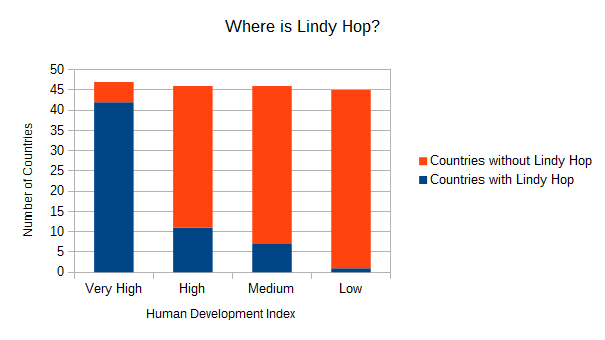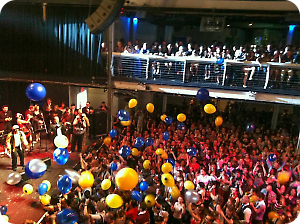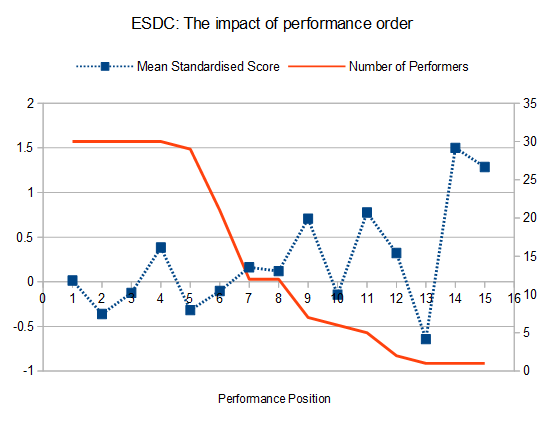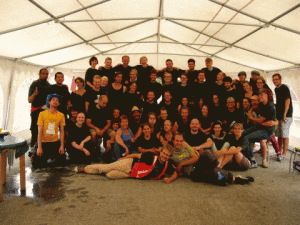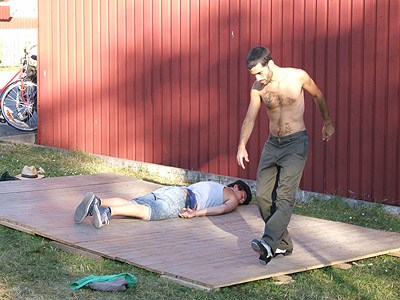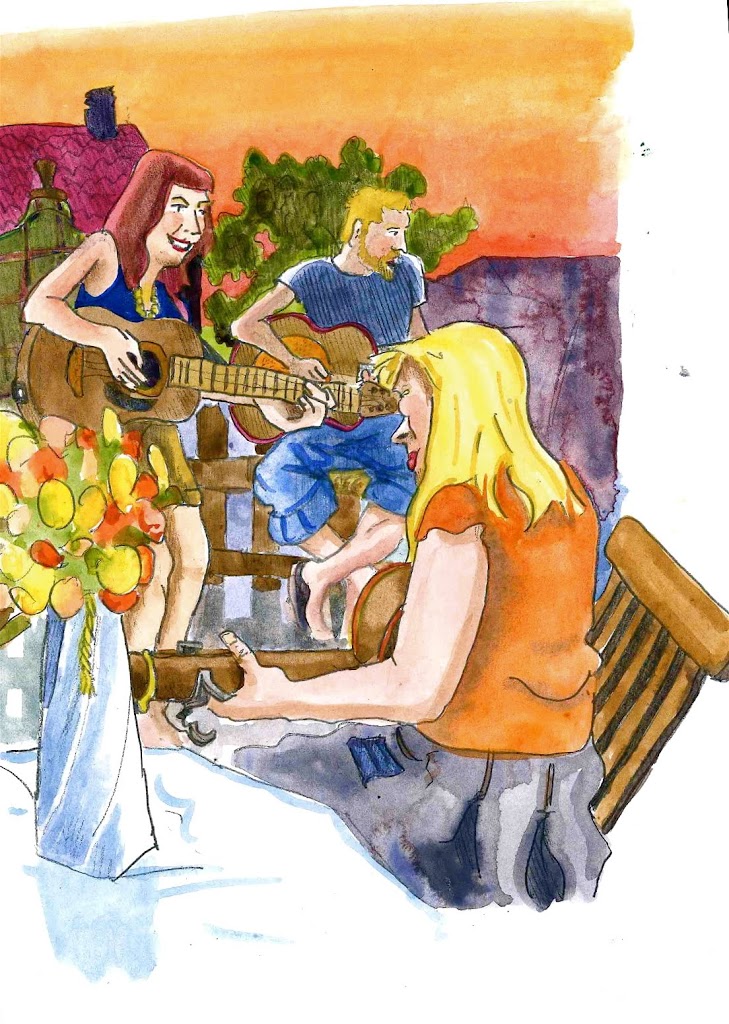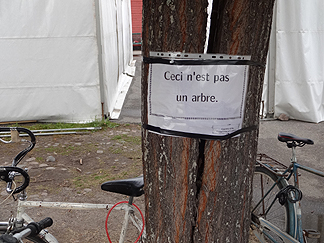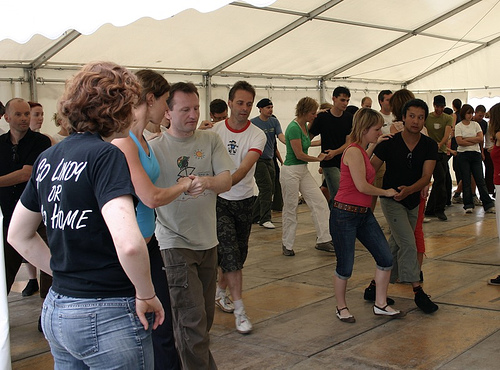This is the first in what will hopefully become a series of posts about safety at swing dance events for community organisers that will focus on various elements of safety, emergency planning and risk management (which are sort of my day job). In this first post I’m going to look at first aid – how it links in with broader safety concerns and occupational health and safety, and then talk about training and kits for your dance events.
Though you should be taking steps to minimise accidents at your venue (through your code of conduct and appropriate instruction during your lessons, for example) falls, collisions and sprains and strains do occur. And though most swing dancers are a healthy lot you need to be ready for other medical emergencies such as asthma attacks, seizures, anaphylaxis, diabetic emergencies, heart attacks and more. First aid will help you meet these emergencies head-on, and having arrangements for first aid create flow on effects such as improving your all-round crisis response ability and helping grow a safety culture in your dance community.
A brief aside on liability
I see a lot of people raise concerns about legal liability when it comes to safety policies. While these may be well-meaning, I believe they’re wrong. To paraphrase some esteemed legal colleagues*: If we can prevent someone from being harmed we avoid the event that creates liability. That’s where our focus should be, not on avoiding legal action after the fact. We need to be focused on doing the right thing, not avoiding liability. And if you’re letting liability concerns get in the way of doing the right thing, perhaps you need to rethink your involvement as a business owner or community organiser.
Do your WHS homework!
Being a good business means complying with Work Health and Safety (or occupational health and safety) regulations. In Australia if you’re running a dance business or community organisation, you need to comply with the regulations and your volunteers (even if they’re entirely uncompensated) are going to be considered as workers under the law.** I’m not going to go into the specifics of WHS regulations, they’re going to be different depending on the jurisdiction you’re in, but you need to check what your obligations are with regards to first aid (and other safety matters, some of which I’ll address in future posts).
Your WHS regulator where you are should be your first port of call for you to brush up what your requirements are for safety in general and first aid in particular. Even if the WHS regulations in your jurisdiction don’t cover your organisation, compliance with them is generally a good idea. For information specific to first aid check with your local Red Cross, health service, fire department or a reputable first aid organisation (such as St John Ambulance in Australia).
If there’s a non-profit or government organisation in your area that supports arts, sports or recreation businesses and non-profits they might also be a good place to check with. They may have information that’s more relevant to your circumstances. Small business associations, your local chamber of commerce and your municipal council may also have useful information.
First Aid Training
First aid is just like lindy hop – to do it well it needs some learnz. And just like lindy hop – what you see in Hollywood isn’t exactly the right way to do it.
Trained first aiders are the best way of having the right skills and knowledge to help in an emergency. If you’re having events exclusively in venues that are already staffed, you might want to talk to them about whether you can call on them to provide first aid or use their first aid kit in the event of an accident. Talk to your volunteers, teachers, DJs and other staff to find out who has first aid training and whether their certificate is current. As with other safety policies it’s good to have more than one first aider available to ensure an injured or sick person has a choice in who comes to their aid.
Even if you already have first aiders in your organisation – the more the merrier! First aid training is a very good idea to help friends, family or strangers in daily life. Look for a course by a reputable provider that runs for at least two days and includes a practical component.*** I wouldn’t recommend online training, except where it forms a component of a refresher. Whilst these courses can be pricey, there’s no substitute for hands-on experience.**** However there are more affordable options out there. You might be able to get training through your employer if you have a day job, or your municipal council, community association or fire brigade may run cheap or free first aid courses. If you have time on your hands beyond running a dance organisation you might consider volunteering with the Red Cross or other volunteer emergency organisation and receive training that way.
If you’ve taken a course in the past and if you haven’t updated your training, at the very least in the last 3 years, you should do so. Recommendations on the best treatment for various conditions and injuries changes (for example since I first trained in CPR there have been significant changes to how it’s trained in Australia, and the Heimlich manoeuvre, which has never been recommended in Australia is starting to be replaced in the USA). WHS regulations may recommend or mandate a certain frequency of refreshers and re-trainings for the certificate to be valid.
First Aid Kits
There are plenty of first aid kits on the market, and you can easily buy them online. You should consider your needs (such as the number of people you have at your events, where your event is held and whether there’s any special hazards to address) when you’re buying one. I prefer to build my own first aid kits as it helps familiarise myself with their contents and makes it easier to restock them when used*****. I’ve compiled a list below of what I’d include in a dance event kit.
You might want to include a rescue inhaler and epinephrine auto-injector for asthma and anaphylaxis, but these can be expensive, need to be replaced regularly and you may need a prescription depending on the laws in your jurisdiction. You should also only have these if you or your designated first aiders have been trained in how to identify asthma or anaphylaxis and the use of the devices.
Make sure you restock your kit every time it’s used. It’s very easy to run out of things like adhesive strips if you’re often bringing it out for blisters and small cuts. Also check the expiry date on the contents and replace them if they go out of date. It’s a good idea to print a list with the contents of the kit and put it inside to make checking it easier – you can write the expiry dates next to the contents as a handy prompt on when to replace them.
That’s pretty much all I have to say on first aid. Let me know if there’s anything you think I should add, or if I’ve left something out. Next time: Fire Safety.
* If you’re interested in the law of disasters, fires and emergencies I highly recommend Michael Eburn’s Australian Emergency Law blog and USA-based Curt Varone’s Firelaw blog.
** As far as I’m aware. This is the case in NSW and in the national model legislation, but I can’t remember if it’s been similarly implemented in all states and territories. If you’re out of Australia YMMV.
*** Ideally, you’re going to want the trainer to cover management of sprains and strains, common dance related injuries, in a practical session so you can get hands on experience in how tight to wrap a compression bandage. Ask them about this when you’re booking the course.
**** This is especially the case with CPR. To perform it properly requires lot of exertion and I’ve had some medics tell me that if you don’t crack a rib you’re probably not doing it right. This is in stark contrast to the fake CPR you see on TV and in movies where they’re not actually compressing the chest (which is for good reason – they’d seriously injure or even kill the actor if they were doing it properly)!
***** I also generally have one at home, my carry bag and in my car so a central supply to restock from is useful
First Aid Kit List
This list is based on the list from the Safe Work Australia First Aid in the Workplace: Code of Practice and has been modified to supplies that are more or less needed for a dance event. This is what I would recommend in an urban area for classes or a weekly social. If it’s a larger event, an event held in a rural area, you’re preparing food or hot drinks or where there’s special hazards I’d recommend a more extensive kit.
| Item | Quantity |
| Instructions for providing first aid – including Cardio-Pulmonary Resuscitation (CPR) flow chart (although you may want to substitute having a first aid app on you and your volunteers’ phones) | 1 |
| Note book and pen | 1 |
| Resuscitation face mask or face shield | 1 |
| Disposable nitrile examination gloves | 5 pairs |
| Gauze pieces 7.5 x 7.5 cm, sterile | 3 packs of 5 |
| Saline tubes (15 ml) | 8 |
| Wound cleaning wipes (% Cetrimide BP) | 10 single wipe sachets |
| Adhesive dressing strips (“Band Aids”) – plastic or fabric (if you have kids at your events get some Batman ones too) | Large packet of assorted shapes and sizes |
| Splinter probes (single use, disposable) | 5 |
| Tweezers | 1 |
| Scissors | 1 |
| Antiseptic liquid/spray (50 ml) | 1 |
| Non-adherent wound dressing/pad 5 x 5 cm (small) | 6 |
| Non-adherent wound dressing/pad 7.5 x 10 cm (medium) | 3 |
| Non-adherent wound dressing/pad 10 x 10 cm (large) | 1 |
| Sanitary pads and tampons (in addition to being handy if someone’s run out they can be useful for treating wounds) | Assorted |
| Conforming cotton bandage, 5 cm width | 6 |
| Conforming cotton bandage, 7.5 cm width | 6 |
| Crepe bandage 10 cm | 3 |
| Non-stretch, hypoallergenic adhesive tape – 2.5 cm wide roll | 1 |
| Safety pins | Pack of 20 |
| Plastic bags – clip seal (small) | 3 |
| Triangular bandage (calico or cotton minimum width 90 cm) | 5 |
| Emergency rescue blanket (for shock or hypothermia) | 1 |
| Eye pad (single use) | 4 |
| Instant ice pack | 3 |
| Ibuprofen | 1 small packet 200mg tablets |
| Thermometer | 1 |

